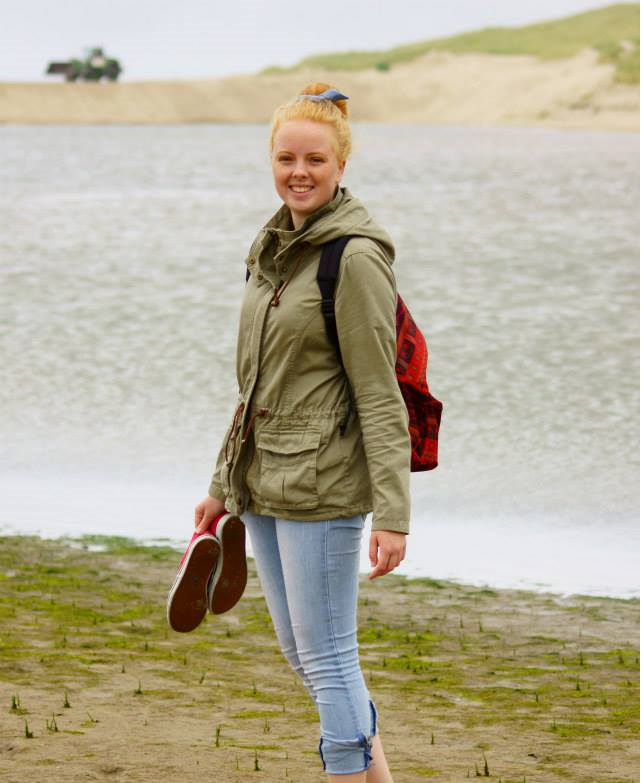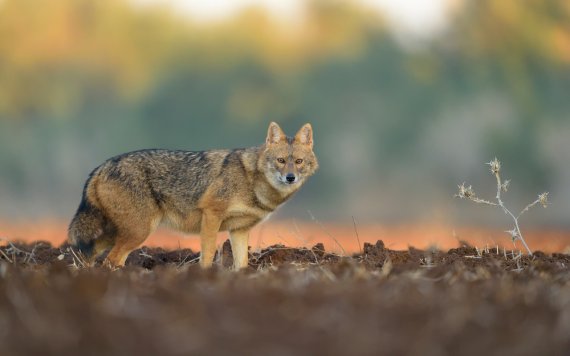The golden jackal is the little nephew of the wolf. © Shutterstock
‘I’m really thrilled with this unique internship position. I ended up at the Mammal Society through Alterra, because I wanted to do research on the migration of the wolf. But it turned out there were already lots of people working on that.’ Wennink was then offered a similar research topic on the golden jackal (canis aureus). ‘To be honest, I had never heard of it. But the more I read about the golden jackal, the more awesome I think it is. It is a super-flexible animal and it is actually quite difficult to identify the limiting factors that could prevent it from being able to live somewhere.’

Joliene Wennink is going to look for suitable habitats in the Netherlands for the golden jackal.
Quest
Unlike the wolf, which was indigenous to the Netherlands in the middle ages, the jackal is a stranger to this country. Wennink: ‘That is really exciting because everything is new.’ She is now combing the literature to find out what is already know about the animal. ‘That is quite difficult as there has been a lot of research on the wolf but not much on the golden jackal. On the other hand, I’m enjoying precisely that quest because I’m learning so much from it.’
They are extremely timid so they are not easy to see.
The golden jackal’s original habitat stretches from the Balkans and the Middle East to Bangladesh. The jackals have been spreading further afield since the 1980s. It is not entirely clear why that is, says Wennink. ‘It is thought to have something to do with protective legislation, climate change and changing land use, as more and more people are moving to the cities.’ The migration is going very fast and the golden jackals is already found in Germany and Italy. The first ‘Dutch’ golden jackal was sighted with a camera trap on the Veluwe in 2016. But Wennink says there may well be more of them roaming the country. ‘They are extremely timid so they are not easy to see.’
Omnivore
Golden jackals live in packs, just like wolves, and the young from previous years help bring up the cubs. When they are about two years old, they set off in search of a new territory of their own. Unlike the carnivorous wolf, the jackal is a true omnivore. It preys on small animals such as rabbits, rodents, reptiles and birds. It also eats eggs, fruit and garbage. Wennink: ‘In India, jackals are a pest on rubbish dumps. Luckily we deal with our garbage differently here, and they could even make a positive contribution – by getting rid of rodents on farmland, for instance.’
On the basis of the data she has collected, Wennink is going to use a geographical information system (GIS) to make maps on the computer giving an overview of suitable habitats for the golden jackal. She sees this as important information – for drawing up a management plan for a particular area, for instance. ‘It is something special when a new species of animal comes to the Netherlands and it would be a real pity if it went wrong because we weren’t prepared.’
Also read:
After the wolf and golden jackal. Who follows?
Golden jackal spotted on the Veluwe
Wolf A28

